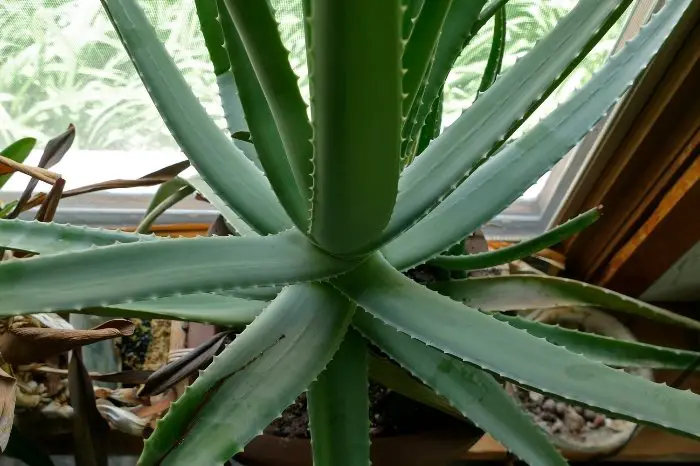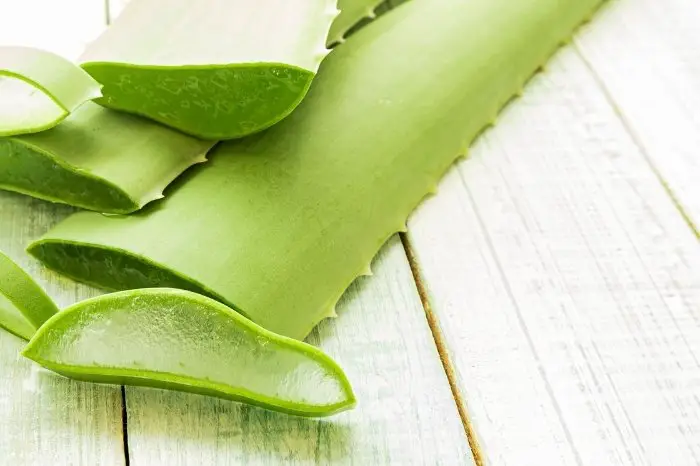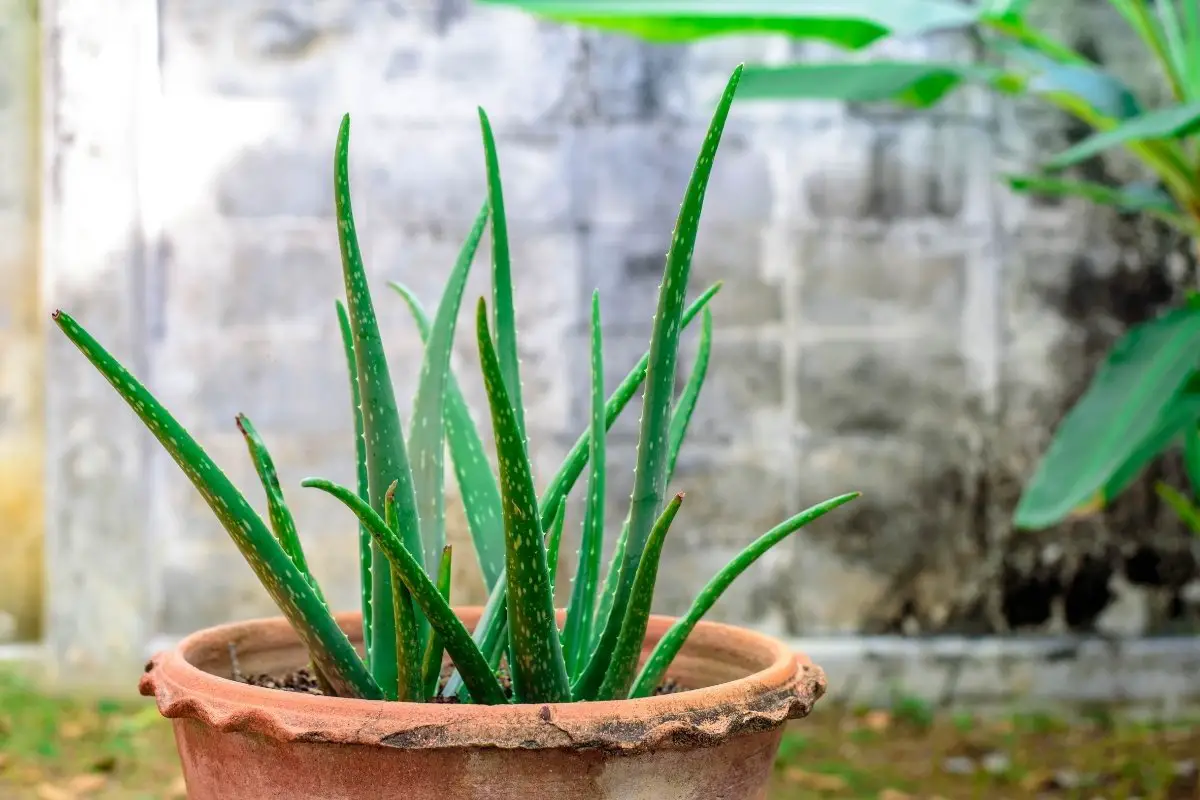Last Updated on January 22, 2022 by Cristina
All the grace and benefits of the aloe are packed in the long pointy leaves, but sometimes the aloe vera leaves are not plump and start drooping. Before you get rid of the whole plant thinking it contracted a disease, take a closer look at your care regimen. Aloe vera is a type of succulent, making it a sturdy plant by default. But even succulents can get sick or die out due to improper care.
Aloe vera needs minimal attention but properly dosed amounts of water and sunlight. First, let’s see why your aloe has thin leaves and an inadequate appearance.
Is A Skinny Aloe Plant Normal
The aloe vera, botanical name Aloe Barbadensis Miller, is the most common aloe type picked as a houseplant. It’s perfect for beginners and people who tend to forget about their plants. As a succulent, this plant stores all the water in its leaves. When the aloe vera receives proper care, the leaves are plump, stiff, and fleshy.
Skinny aloe is a sign that something is not right with the condition you’ve provided for it. The common problem is the location. The aloe vera needs 6 to 8 hours of direct sunlight. Lack of sunlight results in leggy, skinny, and runny plants.

There are over 300 species of aloe, but they all require similar growing conditions. Some of them are up to 12 inches tall, while others, like the Aloe Ferox, can grow over 10 feet.
Aloe vera is considered the medicinal type due to the many health properties packed in the leaves. However, not all aloe plants have medicinal properties.
But, Why Are My Aloe Leaves Thin?
There are several reasons why your aloe vera leaves are no longer plump; lack of sunlight, overwatering, unsuitable temperature, and small container.
Most often, thin aloe vera leaves indicate that your plant is not getting watered as much as it requires. You should leave the aloe thirsty most of the time, but if you stretch this period longer than optimal, the plant draws all the water from its leaves. As a result, the leaves become thin, dry, and limp.
Overwatering can also make your plant leaves thin. Soggy soil causes the aloe plant’s root to rot. Then the leaves stop receiving the necessary nutrients and moisture from the soil. Wet soil is the perfect environment for the development of mold, bacteria, and fungus.
Wait until the top 2 inches of the aloe’s soil are completely dry. You can also use a moisture meter. Then, if your plant is potted, soak the pot in water thoroughly. Let the excess water drain from the holes.
Transplant the aloe vera once the pot becomes too small. Aloe vera grows so fast that you might notice roots coming out of the pot’s drainage holes. They’re looking for more nutrients which the soil can’t provide. Once the top part of the plant becomes too tall and heavy it’s time to repot the aloe.
WONDER SOIL | Organic Cactus & Succulent Soil (12 Quarts). Fast Draining
How To Prevent Thin Aloe Leaves
It’s best to prevent a leggy plant before you have to fix it. Once you get your aloe vera, plant it in a mix of well-draining soil, gravel, and sand. Pick a pot with drainage holes.
Then, choose a place in your house that receives 6 to 8 hours of indirect sunlight a day. Don’t place the pot in a partially lighted spot. The leaves will stretch to the light source resulting in a disproportionated plant. You can switch locations and rotate the plant periodically. If the weather allows, you can keep it outside for half the time.
Aloe vera can grow under led lights too. If you live in a particularly gloomy area, use a light lamp to help the plant. Beware that they can get hot and damage the plant if placed too close.
Check the soil once a week by digging up the top layer. Water only if it’s dehydrated, but water generously. When the aloe vera leaves are not plump, it means there’s little aloe gel. If you’re growing aloe for its healing properties, you must prevent thin leaves in order to extract some gel.
Brown Aloe Vera Leaves
Are your aloe vera leaves getting brown too? Direct sunlight is the leading cause of browning and wilting aloe leaves. Intense sunlight can burn the leaves, causing dry tips, yellowing, and eventually wilting. It also dries out the soil quicker, requiring regular watering.
What Can Kill An Aloe Plant
Aloe vera is not a hardy plant. It won’t tolerate temperatures below 55°F or frost. If it experiences any frost, the leaves will turn brown and fall off. The plant can die or survive depending on how much damage it suffered.
If you forgot your aloe vera outside during the night, bring it inside to a warm temperature. Don’t expose it to too much light and let the dead leaves fall off on their own.
Overwatering can effectively kill the aloe vera. However, if you tend to water it too often and water doesn’t drain, the soil can develop mold, and roots will decay.
Benefits Of Aloe Vera Leaves
The fleshy aloe vera leaves are filled with a soothing gel. The thick substance packs a ton of amino acids, vitamins, minerals, and antioxidants. It’s effective in calming irritation caused by burns, allergies, and sun exposure. However, it’s not suitable for eating.
The aloe vera plant acts as an air purifier too. It takes carbon dioxide and produces oxygen even at night. Unfortunately, the number of houseplants capable of producing oxygen at night is very limited.
Aloe vera can also decrease the amount of benzene and formaldehyde in the air.

Bottom Line: Aloe Vera Leaves Not Plump
Once you get an aloe vera plant, you’re expecting it to grow into a showy plant with thick, plump leaves. Ending up with thin and runny leaves is not on your agenda. But there is a turning point.
The drought-tolerant plant might be receiving too much water, or it has grown out of its pot.
Try to change the position to a one with at least 6 hours of sunlight. Compensate with artificial light if the weather is too cloudy for a longer time. Or rotate positions it every once in a while.
Share this article with someone dealing with aloe vera problems!
Mary is a passionate gardener who loves spending her days getting her hands dirty and nurturing her plants. She‘s an avid reader of gardening magazines and is always looking for new ways to make her garden thrive. When not outside tending to her plants, Mary can be found inside reading up on the latest gardening trends, comparing notes with fellow gardeners, and finding the perfect pottery planter for her next planting project.



